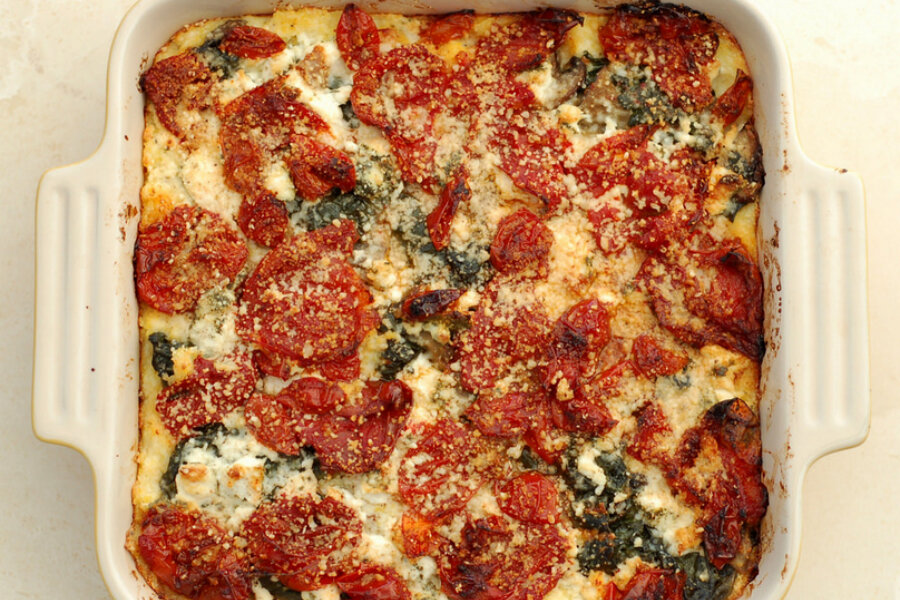Baked polenta with oven-roasted tomatoes and cheese
Loading...
I ended up with a good amount of leftover polenta from a previous dinner. After it sat in the fridge for a few days, inspiration struck and I set about breathing new life into the cold mass of gruel using a few ingredients I had in the freezer and fridge.
I got out a baking dish, greased it, turned the polenta out into it and patted it down into a single layer. Then I topped it with a bag of the amazingly tasty garden tomatoes I had roasted with garlic and herbs at the end of the summer. I put the little bit of kale, mushrooms and bacon that was leftover on top of that, crumbled some goat cheese over it and topped it with grated Parmesan.
Into the oven to bake. Out it came all bubbling and browned and savory and delicious. It was just as good as the original meal had been but with about one quarter as much effort. There is nothing quite as satisfying as turning leftovers into something people will fight over.
As with almost everything I post, you should feel free to play with this recipe. Add sauteed onions, spinach, sausage, grilled eggplant, pesto, mushrooms, bacon – whatever appeals to you. For example, I used goat cheese because that is what I had on hand (and what needed using up) but you could substitute lots of other cheeses – mozarella, Monterey jack, cheddar, bleu cheese, etc., – with good results, or you can skip the cheese altogether if you prefer.
Also, you very well may not have a freezer full of homegrown tomatoes at your disposal (though I hope you do, for your sake.) But if you have a little time, you can make sauce – this simple tomato sauce with onions and butter from Marcella Hazan is a sure-fire winner. Or, if you happen to work and/or have kids or some other impediment that stops you from devoting your life to cooking, you can always use a jar of whatever tomato sauce you like or buy a jar of sundried tomatoes and use those – 'twill be delish!
Baked Polenta with Oven-Roasted Tomatoes and Cheese
Serves 4-6
3 cups of cooked polenta (follow the directions on the package, or if you're in a hurry, you can also buy pre-cooked polenta in "log" form and cut it into slices to lay in the bottom of the pan)
2 cups of oven roasted tomatoes, sun dried tomatoes or one to one and a half cups of the sauce of your choice (you can use more sauce if you like but keep in mind that too much moisture will keep the polenta from firming up)
1 cup of sauteed greens (spinach, kale or chard), liquid removed
Half a cup of grated Parmesan cheese
Butter for greasing the baking dish
1. Preheat the oven to 375 degrees F., and grease your baking dish. Spoon the polenta into the bottom of the dish and smooth or pat it down to a uniform height, filling the bottom of the dish completely.
2. Spread the tomatoes or tomato sauce over the polenta, then layer on the greens and the cheese and top with the grated Parmesan. Sprinkle with salt and pepper and bake for 20-25 minutes or until bubbling and lightly browned on top. Let cool for a few minutes before serving so you don't burn anyone's tongue!
Related post on The Garden of Eating: Creamy Polenta with Kale and Mushrooms








